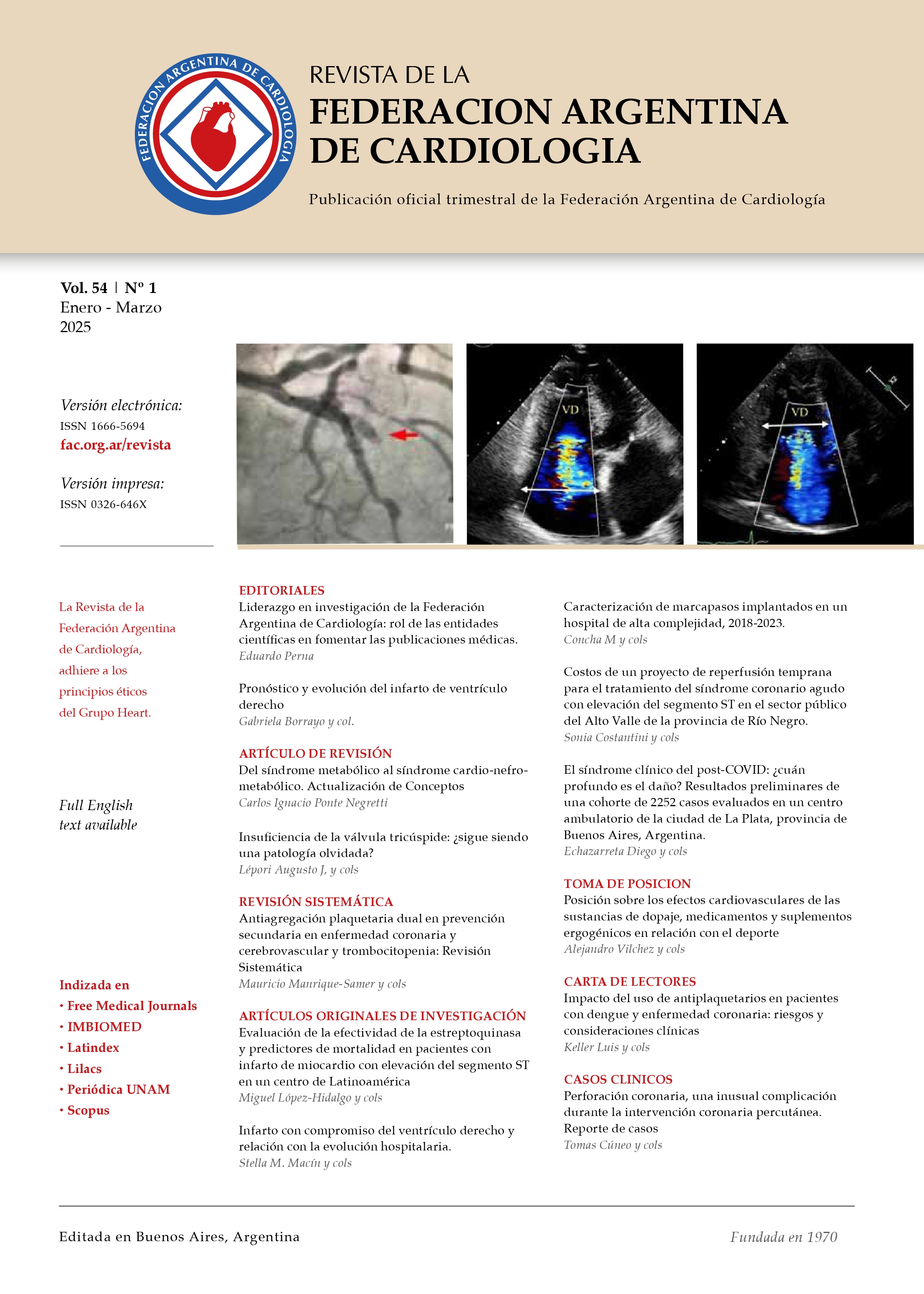Characterization of pacemakers implanted in a high-complexity hospital, 2018-2023
Keywords:
Artificial cardiac pacing, Artificial pacemaker, Cardiac arrhythmiasAbstract
Introduction: the prevalence of pacemaker implantation has increased, primarily due to the rising life expectancy of patients. There are few studies that provide a characterization of pacemakers used in recent years. Methodology: an observational, retrospective, and correlational study was conducted following the STROBE guidelines for observational studies. Data were analyzed from a high-complexity hospital's pacemaker procedures between 2018 and 2023. Results: there was a 150% increase in procedures between 2018 and 2023, with a total of 646 pacemaker procedures: 59% of the procedures were performed on men, with a higher prevalence in those aged 66 to 80 years; dual-chamber pacemakers accounted for 60.2% of the implants. In single-chamber pacemakers, 49.8% of cases are due to atrioventricular block with atrial fibrillation, followed by second-degree and complete atrioventricular block in similar proportions. For dual-chamber pacemakers, 48.6% of cases corresponded to complete atrioventricular block, followed by sick sinus syndrome. There is a statistically significant relationship between the type of pacemaker and gender, as well as between the type of pacemaker and the fixation system (active electrodes). Conclusions: the placement of pacemakers has increased significantly in recent years. There is a higher prevalence of implantation in male patients, dual chamber pacemakers, and active fixation leads.



